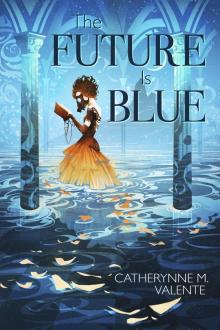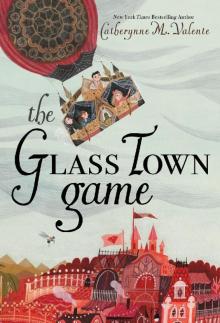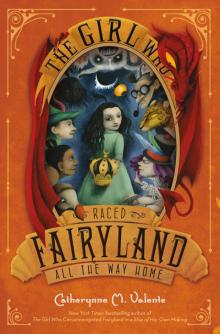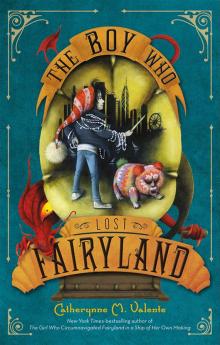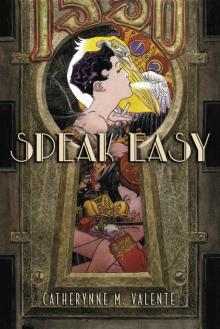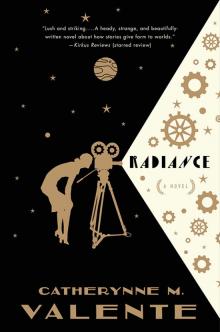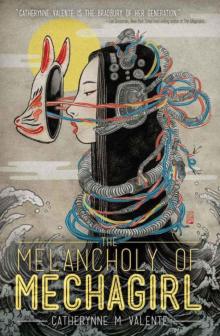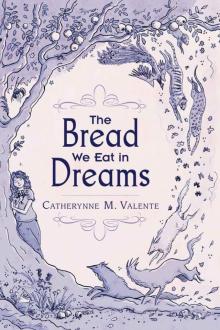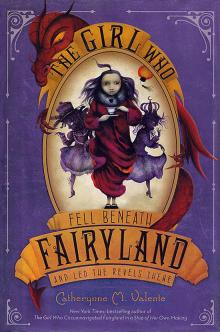


The Devil You Know, Page 34
Gwen Adshead
Users like David are also quick to insist, ‘It doesn’t make me a paedophile.’ As I’ve defined the term in the story of Ian, that is correct but irrelevant; most adult men and women who download child pornography are not exclusively or even primarily sexually attracted to children. It is believed that the majority of them, as with CSOs like Ian, are married to other adults, often with children of their own, whom they may or may not abuse. Getting detailed and accurate data on this is always challenging, but international law enforcement bodies know enough about the industry and its profits to extrapolate that there are tens of millions of these consumers worldwide.5 The uncomfortable truth is that this audience must include a significant proportion of people just like you and me, including secret users among our friends, families, neighbours and educators – and yes, even our health care providers. Considerable study of the connection between watching porn online and ‘contact offences’ has been made in recent years, suggesting those who do move from the virtual to the actual are more likely – but not exclusively – to be those who have exhibited prior criminal or antisocial behaviour. One German project aimed at prevention and treatment took the name Dunkelfeld, venturing into the ‘dark field’ of undetected and unprosecuted child exploitation behaviours.6
Sitting in my office after he stormed out, I recalled how David had originally come across, with his Facebook-friendly childhood, wonderful parents and success at work. Yes, he was bombastic and grandiose, but so ostensibly ‘normal’, to use that well-worn word again. He was a family man, a golf-playing doctor in suburbia, for heaven’s sake; there was nothing obviously extraordinary or dangerous about him. He practically embodied the idea encapsulated in W. H. Auden’s lines, written on the eve of the Second World War, that ‘Evil is unspectacular and always human, / and shares our bed and eats at our own table’.7
I found myself thinking back to other encounters where I had missed something under the surface, with people like Lydia, who presented so well. I had to recognise that both Lydia and David were around the same age as me when we worked together, and had a similar racial, educational and social background to mine. Also, both David and I were doctors, with a shared professional experience, to some extent, and both facing retirement. Despite all the training and experience I’d had, that bias held some sway: ‘normal’ is self-defining, and they were ‘like me’. At least with David I had sensed from the outset that there was something dark and worrisome underneath, and I had continued working with him for far longer than I ever intended for just that reason. My internal alarm had been ringing since the moment he first stepped into my office.
With the benefit of hindsight, I can also see that because I had spent so much time working with violent offenders, many of whose early childhood experiences were horrendous – people like Charlotte or Sharon or Gabriel – I had been inclined to discount the far more subtle adversity David had known. After all, having busy working parents, being raised by nannies and living in lonely, high-pressure boarding schools – these things seem relatively harmless. They are familiar in our culture, and the vast number of British people who have similar experiences rarely break any laws, let alone turn to violence. At an advanced stage in my career, childhood narratives like David’s have given me a renewed appreciation of the importance of early childhood trauma and its influence on our mental development, as well as on our propensity for violence. How subtle, how nuanced that can be; it does not require obvious early abuse. Experience of what might be considered a kind of ‘benign neglect’, when found in combination with other risk factors, can also be predictive of violence or self-harm, or both.
I pictured again, as I do so often, the image of a bicycle lock, and lined up the other risk ‘numbers’ that David had, including his gender, his social isolation and perhaps also alcohol or substance misuse, something I had wondered about at times in the course of our work together and which is also disproportionately common in the medical profession. What was the ‘last number’ that had sprung that lock open for him? What had been his equivalent of an innocent laugh from a girlfriend for Marcus or the simple phrase ‘so long’ for Kezia? What did he see or think about in those moments before he had taken the decision to click on his first image of a little child being horribly exploited and abused – and then another, and another, on into the vortex? I will never know this because he ‘couldn’t say’, just as he couldn’t talk about what his nightmares contained. I can still recall my early patient, Tony, and that description of his final, fatal look into the blue eyes of his victim, before he took his life and the boy was transformed in Tony’s sleep into a ghastly Medusa head. I thought David would probably be contemptuous of Tony if he met him, and on the surface, nobody would see them as having anything in common. But I did. I’d come full circle to a man who exploited the young and vulnerable to avoid his feelings, and was plagued by horrors in his sleep; at least Tony had been able to tell me about his nightmares.
When I asked him early on what he did when his nightmares woke him up, David talked about getting out of bed and ‘going online’. Much as some people dissolve their distress in alcohol, turning on a computer and watching someone else being tormented and vulnerable did something for David psychologically. Perhaps doing this made him regain a sense of power when those disturbing dreams rendered him weak with fear. This was not so different from the function of Ian’s abuse of his vulnerable children, or what Sam had told the Homicide Group about his father calling him by a childish nickname and his need to assert himself as a man by overpowering his dad. If David were to go on and get treatment for his use of porn, much as with substance addiction he would be asked to abstain in order to understand what his ‘drug’ had done for him and to help him find a healthier substitute. Some years ago, my patient Zahra had to learn to express her anger and grief without setting herself or anyone else on fire; David’s route to recovery, if he chose to take it, would involve finding his own way to safely express those feelings.
As I sat calming myself with some deep breaths, I was reminded of David’s distinctive line about his father: ‘He was … there and not there.’ I had remarked that this was a fine description of him too, as I experienced him in therapy. Now I wondered if he saw his offending self through this lens: if he was never ‘there’, simply because he wasn’t actually in a room doing terrible things to a drugged or restrained child, he might have persuaded himself for a long time that he was free to persist with his ‘hobby’. At some point that rationale had worn thin, bringing him to my office. With a jolt I realised that if David had sought me out after hearing me discussing my work on the radio, then he may have chosen me because he knew I had worked with sex offenders. It was possible, even if it was unconscious, that he wanted to bring his offender self to therapy for detection.
I took legal advice and consulted with some colleagues, and then I rang the GMC. They thanked me for my concern, took the details, and it was done. I wrote a letter to the GP who had originally referred David to me, saying that therapy had ended abruptly, with his problems unresolved. I heard no more from him. I didn’t expect to hear from David again either, and nor did I. The GMC could involve the police, but a case against him might never proceed if he denied everything and destroyed the evidence. Or he might be criminally prosecuted and sent to prison, with a sentence of up to five years as a possible outcome. I thought this could be catastrophic for him. If he were identified as an offender, he stood to lose much more than his licence to practise or his liberty; it might feel as if his whole history had been erased. His identity as a doctor extended far back into childhood, even to his birth, when he was named for his GP father.
I think I deliberately avoided trying to find out more about David’s fate because I dreaded to hear what had happened. In theory, he had plenty of potential for recovery, but much would depend on what he wanted and whether he could even define it. He had often used expressions like ‘I couldn’t say’ or ‘I can’t think’ when I questioned him, like an actor with no li
nes or one who had gone blank, clues that had hinted to me of his underlying distress. If he could find a new vocabulary that would allow him to ‘speak his mind’, there was a chance that he could change; he might even go on to have a restful retirement and a happier third act. Even the little he had revealed to me about himself was probably the most he’d ever shown anyone of what lay behind his facade. It was a start, the beginning of an essential dialogue.
I hoped that he would be able to seek help again one day. Hope is not fanciful or naive; it is a mature defence against sadness and loss. I had not relished working with him, but in the unlikely event he ever came back to me, I would welcome him and try again, and maybe he would allow himself to be vulnerable. I considered whether I had let him down; it was possible that in the absence of a supportive team around me to help me process my negative responses, I let him get under my skin, to the point where I wasn’t as helpful as I could have been. The truth is, no matter how long I’m in this job, I’m still a human, with human likes and dislikes. All the training and experience in the world doesn’t wash that away, and I don’t think I’d want it to.
NOTES
1 From ‘Doctors’ by Anne Sexton. In The Complete Poems of Anne Sexton (Boston: Houghton Mifflin Harcourt). Copyright © 1981 by Linda Gray Sexton and Loring Conant, Jr.
2 Mindfulnessfordoctors.co.uk.
3 From ‘This Be the Verse’ by Philip Larkin. In Larkin, P. (1974) High Windows (New York: Farrar, Straus and Giroux; London: Faber & Faber).
4 Vaillant, G. E., Sobowale, N. C. and McArthur, C. (1972) ‘Some Psychologic Vulnerabilities of Physicians’, New England Journal of Medicine, 287:8, 372–5.
5 Derek Perkins, whose work I’ve referenced above with regard to Ian, offers valuable insight on this. One recent review – ‘Child Exploitation Materials Offenders’, European Psychologist, May 2018 – can be found here: https://econtent.hogrefe.com/doi/abs/10.1027/1016-9040/a000326.
6 Beier, K. M., Grundmann, D., Kuhle, L. F., Scherner, G., Konrad, A. and Amelung, T. (2015) ‘The German Dunkelfeld Project: A Pilot Study to Prevent Child Sexual Abuse and the Use of Child Abusive Images’, Journal of Sexual Medicine, 12:2, 529–42.
7 Excerpt from ‘Herman Melville’ by W. H. Auden. Copyright © 1940 by W. H. Auden, renewed. Reprinted by permission of Curtis Brown, Ltd.
Every effort has been made to trace and contact copyright holders and to obtain permission for the use of copyright material. The publisher would be pleased to rectify any omissions that are brought to its attention at the earliest opportunity.
CODA
The many life stories I have heard in the course of my work have given me an infinite respect for the mind’s complexity. The deeper I go, the more I realise how unknowable it is, like the vast oceans or the universe itself. I hope that as this book ends, the reader will surface, glad of the fresh air and freedom, with a changed perspective on what we call ‘evil’. It is really a term, much like beauty, which says more about the viewer than the object. Telling these tales of suffering and violence will have served a purpose if, next time you see a news item or a film about some ‘evil monster’, it’s possible for you to look at them with a new consciousness, knowing that we are all more alike than we are different. I am grateful for your willingness to give this time and thought, as I am grateful for the courage of the men and women who have shared their thoughts and feelings with me over a working lifetime.
There are few countries in the world where mental health spending is sufficient to meet the needs of the population, because governments are unwilling to prioritise it. I wish for my psychiatric great-grandchildren to look back on this period as if revisiting medieval times, shaking their heads at how our society and medical establishment put so much thought and money into advancements in cardiac care or laser surgery or the wholesale replacement of vital organs, and yet did little to help people heal or rediscover their minds, inside and outside of institutions.
Far more than punishment or sanctions, recognising common humanity can change minds for the better. We need improved legislation and allocation of public resources, promoting measures that encourage pro-social attitudes and reduce childhood adversity. Among our interventions should be more and better help for people with addictions and the socially isolated, and assistance for parents with mental health problems; we also need greater investment in specialised psychological therapies for complex conditions. That bicycle-lock analogy tells us what the risk factors are, so now we need the political and social will to reduce their impact and even to abolish some of them. Yes, it will cost us time and money, but the rewards will be beyond price.
The work of inspirational contemporary thinkers like the American justice campaigner Bryan Stevenson, the teacher and philosopher priest Richard Rohr, and some religious leaders including Pope Francis reminds us that the struggle for peace, restoration and empathy never stops and requires both solidarity and hope. There is so much good to be done, if we dive in with our minds open and our hearts willing. If the people in this book stay with you, in the same space where we conjure ideas of the devil, it is worth remembering that ‘there but for the grace of God’ go any of us.
ACKNOWLEDGEMENTS
The human mind is too complex to understand using only one way of thinking or one kind of technique. If raising a child takes a village, then changing minds takes many people working together in different ways. I am more grateful than I can say to those who taught me, supervised me and worked with me in trying to help offenders change their minds and to articulate how that happens. They are more numerous than the stars in the heavens and too many to name, but those who shine in the context of this book are Sophie Lambert, Laura Hassan and Kathy Belden.
Although most offenders are men, most men are not offenders, and Eileen and I want to dedicate this book to our favourite men. I thank my dear sons Dan and Jack, who daily demonstrate grace, kindness and humour, despite years of (generally) benign neglect. I also offer this work in memory of my much-missed father, Sam Adshead, who always said to me, ‘Of course you can write a book.’ Eileen thanks her husband Greg for his limitless patience, wisdom and generosity of spirit, and for embodying Thomas Aquinas’s idea of love as ‘willing another’s good’.
FURTHER READING
There are so many authors whose work in this field has had a great impact on me over the course of the last three or four decades, only a handful of whom I’ve been able to reference or give credit to within this book. For those readers who might be prompted by these stories to go a little deeper into the vast literature on the study of the mind, and of human cruelty and its treatment, here is a selection of my personal favourites. I have included some works of crime fiction because this genre can be a useful resource for a student of forensic psychiatry, and it always has been for me. Crime fiction requires an exercise in imagination and empathy, and the best authors are very strong on the relationships involved in crimes of violence.
Bateman, A. and Fonagy, P. (2019) Handbook on Mentalising in Mental Health Practice, 2nd edition (Washington DC: American Psychiatric Association).
Browning, C. (1998) Ordinary Men (New York: Harper Perennial).
Burleigh, M. (1995) Death and Deliverance: ‘Euthanasia’ in Germany, c.1900 to 1945 (Cambridge: Cambridge University Press).
Chesterton, G. K. (2005) Father Brown: The Essential Tales (New York: Modern Library Classics).
Christie, A. (2020, reprinted edn) The Murder of Roger Ackroyd: A Hercule Poirot Mystery (New York: William Morrow and Co.). Also, the complete Miss Marple series.
Clare, A. (2001) Psychiatry in Dissent: Controversial Issues in Thought and Practice (London: International Behavioural and Social Sciences Library/Tavistock Institute).
Cox, M. (1992) Shakespeare Comes to Broadmoor: ‘The Actors are Come Hither’ – The Performance of Tragedy in a Secure Psychiatric Hospital (London: Jessica Kingsley).
Doidge, N. (2007) The Brain that Changes Itself: Stories of Personal Triumph from the Frontier
s of Brain Science (New York: Penguin Books).
Dunbar, R. (1996/2004) Grooming, Gossip, and the Evolution of Language (London: Faber & Faber).
Fine, C. (2011) Delusions of Gender: How Our Minds, Society, and Neurosexism Create Difference (New York: W. W. Norton and Co.).
Fox Keller, E. (1996 edn) Reflections on Gender and Science (New Haven: Yale University Press).
Gill, A. (1989) The Journey Back from Hell (New York: William Morrow).
Gilligan, C. (1982) In a Different Voice: Psychological Theory and Women’s Development (Boston: Harvard University Press).
Holmes, J. (2009) John Bowlby and Attachment Theory (Abingdon: Routledge).
James, P. D. (1980) Innocent Blood (London: Faber & Faber; New York: Scribner).
Kandel, E. (2006) In Search of Memory: The Emergence of a New Science of the Mind (New York: W. W. Norton and Co.).

